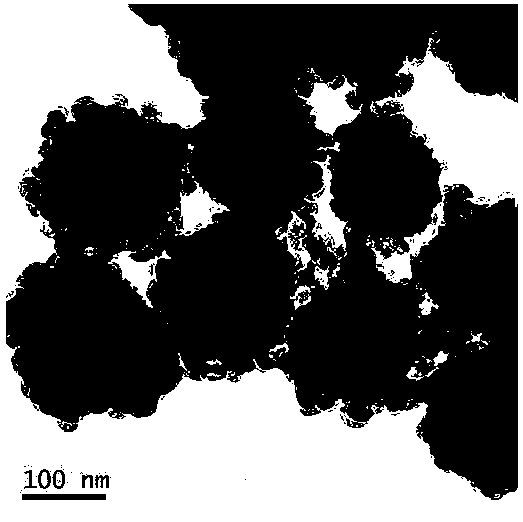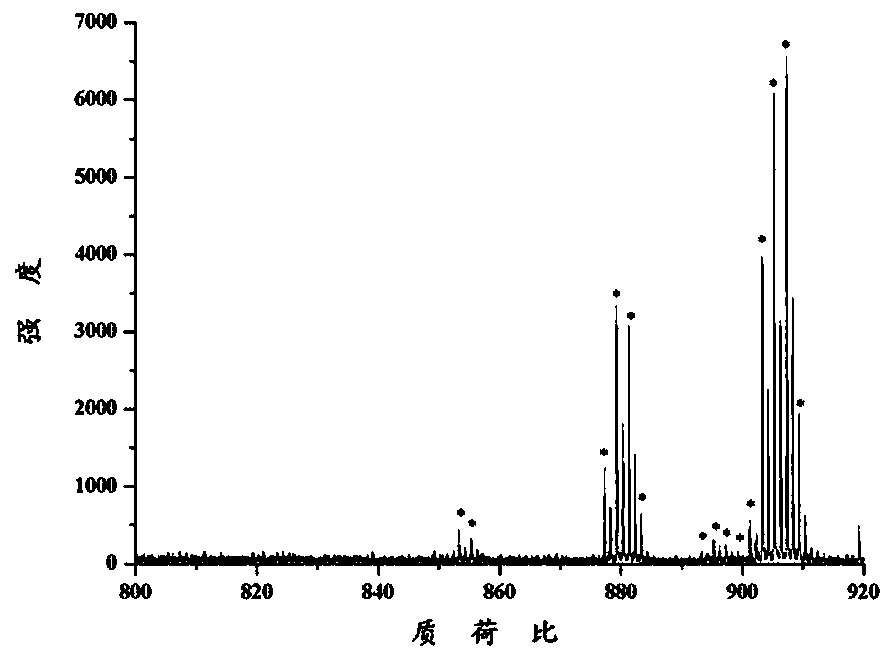Method for quickly screening and authenticating edible oil through surface assisted laser desorption ionization mass spectrometry
A technology that assists lasers and edible oils is applied in nanotechnology for materials and surface science, material analysis through electromagnetic means, and measurement devices. It can solve problems such as poor accuracy, cumbersome operations, and low detection accuracy, and achieve The detection process is fast, the detection process is simplified, and the effect of high sensitivity
- Summary
- Abstract
- Description
- Claims
- Application Information
AI Technical Summary
Problems solved by technology
Method used
Image
Examples
Embodiment 1
[0037] A method for quickly screening and identifying edible oil by surface-assisted laser desorption ionization mass spectrometry, comprising the following steps:
[0038] Magnetic metal-organic framework nanomaterial matrix Fe 3 o 4 The preparation of @ZIF8 includes the following steps:
[0039] Step 1: Preparation of Fe 3 o 4 Magnetic microspheres: weigh FeCl 3 ·6H 2 O was dissolved in ethylene glycol to obtain a clear solution, followed by the addition of sodium acetate and Na 3 Cit·2H 2 O, stir to dissolve, transfer the obtained homogeneous solution to the reactor; place the reactor in an oven at 200°C, and react for 10 hours; wash the obtained magnetic product with water and ethanol for 4 times, and dry it in vacuum at 30°C. FeCl 3 ·6H 2 O, sodium acetate and Na 3 Cit·2H 2 The mass ratio of O is 1:2:0.5;
[0040] Step 2: Ultrasonic preparation of magnetic metal-organic framework nanomaterials at room temperature: the Fe 3 o 4 Magnetic microspheres and Zn(NO...
Embodiment 2
[0061] Magnetic metal-organic framework nanomaterial matrix Fe 3 o 4 The preparation of @ZIF67 includes the following steps:
[0062] Step 1: Preparation of Fe 3 o 4 Magnetic microspheres: weigh FeCl 3 ·6H 2 O was dissolved in ethylene glycol to obtain a clear solution, followed by the addition of sodium acetate and Na 3 Cit·2H 2 O, stir to dissolve, transfer the obtained homogeneous solution to the reactor; place the reactor in an oven at 200°C, and react for 10 hours; wash the obtained magnetic product with water and ethanol for 4 times, and dry it in vacuum at 30°C. FeCl 3 ·6H 2 O, sodium acetate and Na 3 Cit·2H 2 The mass ratio of O is 1:2:0.5;
[0063] Step 2: Ultrasonic preparation of magnetic metal-organic framework nanomaterials at room temperature: the Fe 3 o 4 Magnetic microspheres and Co(NO 3 ) 2 Add it into the methanol solution, use ultrasonic oscillation to obtain a uniform dispersion of microspheres, add 4 times the amount of methanol solution con...
PUM
| Property | Measurement | Unit |
|---|---|---|
| The average thickness | aaaaa | aaaaa |
Abstract
Description
Claims
Application Information
 Login to View More
Login to View More - R&D
- Intellectual Property
- Life Sciences
- Materials
- Tech Scout
- Unparalleled Data Quality
- Higher Quality Content
- 60% Fewer Hallucinations
Browse by: Latest US Patents, China's latest patents, Technical Efficacy Thesaurus, Application Domain, Technology Topic, Popular Technical Reports.
© 2025 PatSnap. All rights reserved.Legal|Privacy policy|Modern Slavery Act Transparency Statement|Sitemap|About US| Contact US: help@patsnap.com



